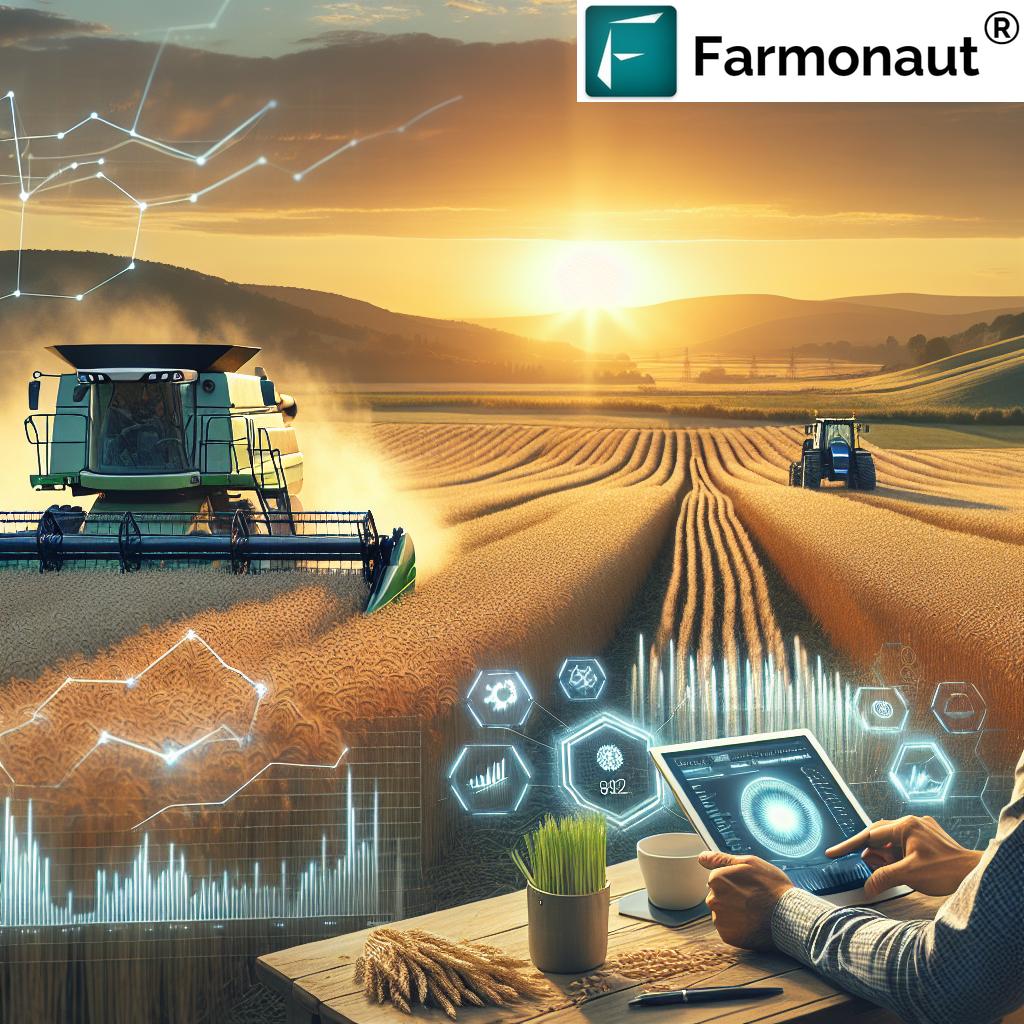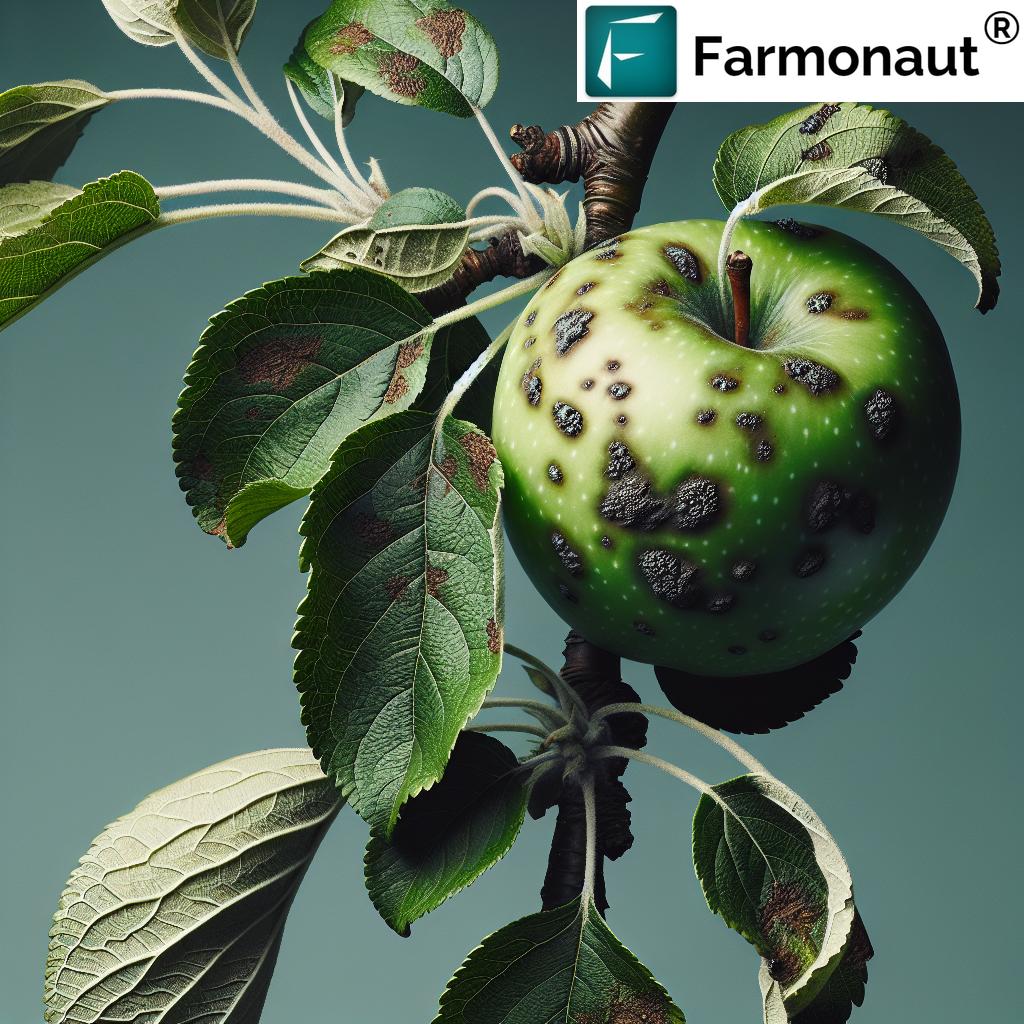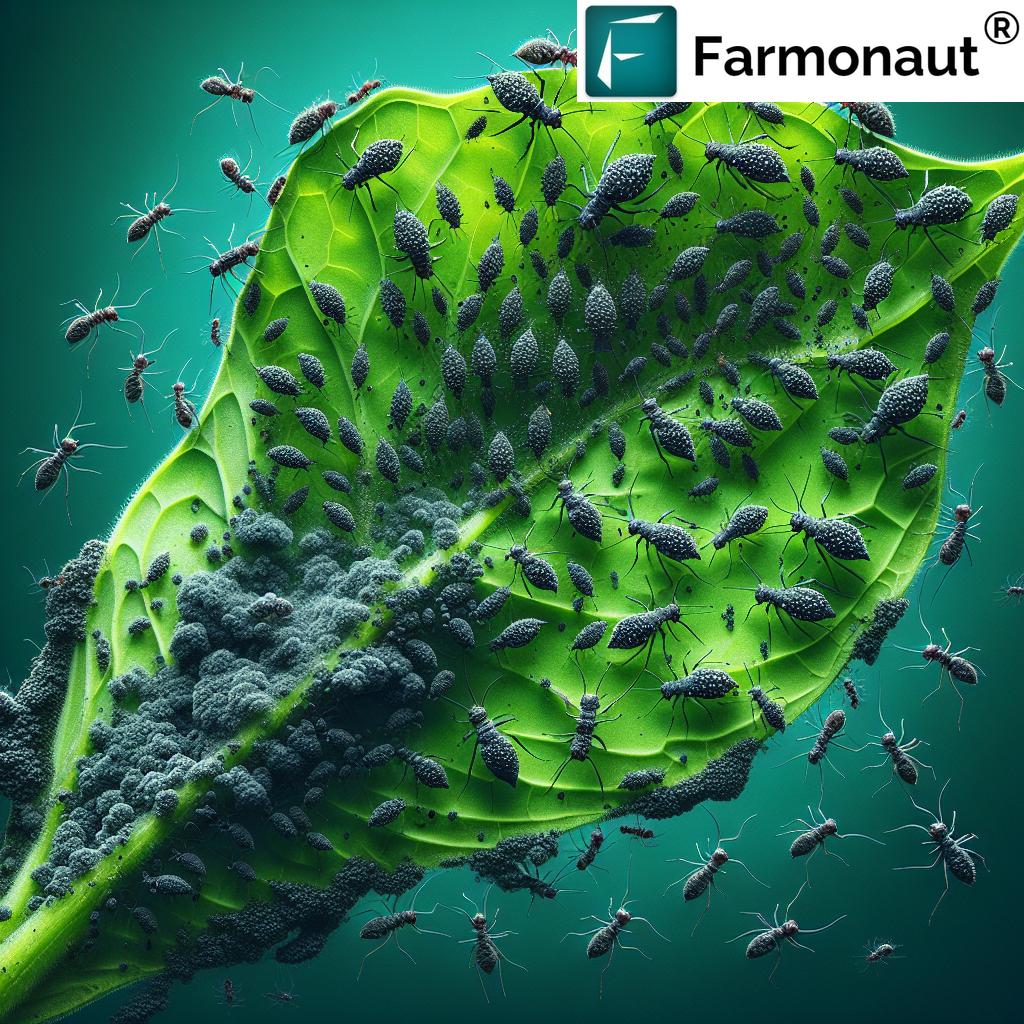Market Gardening: Top Equipment & Profit Trends 2026
“By 2026, over 60% of urban farmers are projected to adopt automated planting equipment for market gardening.”
“Global demand for high-yield hybrid seeds in market gardening is set to rise by 18% by the end of 2025.”
Table of Contents
- Market Gardening in 2025: Trends, Equipment, and Profitability
- Market Gardening Defined
- Advancements in Market Gardening Equipment
- Market Gardening Equipment & Profit Trends 2025–2026 (Table)
- Market Gardening for Profit: Key Strategies & Emerging Trends
- Garden Seed Market: Innovation, Sustainability & Diversity
- Garden Farms Market & Urban Gardening Growth
- Satellite & AI: Tech-Forward Market Gardening with Farmonaut
- Farmonaut Solutions: Smarter Decisions for Garden Farms
- Frequently Asked Questions
- Conclusion: Market Gardening 2026 and Beyond
Market Gardening in 2025: Trends, Equipment, and Profitability
Market gardening has emerged as a vital component of modern sustainable agriculture, increasingly providing fresh food, boosting income opportunities for farmers, and fostering resilient local economies. As we advance through 2025 and look toward 2026, market gardening continues to evolve—driven by innovations in market gardening equipment, amplified consumer demand for fresh produce, rapid urbanization, and the urgent necessity for sustainable farming practices. This article explores the core aspects of the market gardening industry, including new equipment, plant seed technology, emerging urban and garden farm trends, and strategic moves to maximize profit.
Market Gardening Defined: Small Plots, Big Impact
Market gardening refers to the intensive production of fruits, vegetables, and flowers for direct sale in local markets, restaurants, and cooperatives. Unlike traditional large-scale farms, market gardening relies on relatively small plots—often less than five acres—using labor-efficient, diverse cultivation methods. The main objective is to yield a variety of crops throughout the year. This practice not only supports food security and reduces the “food miles” between producers and consumers, but also promotes sustainable economies while adapting to shifting consumer preferences.
- Intensive methods: Maximizes productivity per square meter via succession planting, intercropping, and season extension.
- Diverse crops: Focuses on crop diversity to buffer against market and climate risks.
- Direct sales: Bypasses traditional supply chains, allowing gardeners to engage directly with consumers.
- Local focus: Reduces transport emissions and fosters trust through community-supported agriculture (CSA) programs.
Advancements in Market Gardening Equipment: Propelling Profit & Sustainability
A revolution in market gardening equipment is underway. Between 2025 and 2026, we expect significant gains in equipment efficiency, sustainability, and digital integration. Market gardens are becoming less labor-intensive due to automated and smart tools, while resource use is optimized for higher yields and environmental friendliness.
Key Equipment Advances in Market Gardening for 2025-2026
- Electric Mini-Tractors & Power Tools: Electric vehicles lower costs and emissions, while reducing reliance on fossil fuels. These lightweight, ergonomic hand tools are specifically designed for prolonged use and accessibility across diverse users.
- Automated Weeding Machines: AI-powered robotic weeders precisely target weeds, helping reduce chemical use, improve soil health, and limit labor hours.
- Smart Irrigation Systems: Precision irrigation—including drip systems and micro-sprinklers—uses soil moisture sensors connected to cloud analytics for water savings of 25% or more. This approach ensures crops receive optimal hydration, even in drier regions or during climate-induced stress.
- Advanced Greenhouse & Polytunnel Technology: New insulating materials and climate control allow for year-round production, even in adverse weather conditions—extending growing seasons and improving yields significantly.
- Vertical Farming & LED Lighting: In urban farming, stacking crops and using programmable LED grow lights multiplies output per square meter and fine-tunes light spectra for optimal growth and product quality.
The integration of AI-based monitoring and data-driven decision making—accessible via smartphone and web applications—enables gardeners to track soil health, pest pressure, and overall crop performance in near real-time. These technological advances help ensure efficient production, higher profitability, and resilience in the face of unpredictable weather and market shifts.
Market Gardening Equipment & Profit Trends 2025–2026
| Equipment Type | Key Innovation (2025) | Estimated Adoption Rate (%) | Average Cost (USD, est.) | Benefit (Yield/Time Saved) | Projected Profit Increase (%) 2026 |
|---|---|---|---|---|---|
| Precision Seeders | Variable-rate planting, GPS-guided rows | 67 | $900 – $2,500 | +11% germination, -30% labor | 18 |
| Vertical Farming Systems | Stackable layers, LED light, IoT controls | 54 | $3,000 – $28,000 | 2-5x yield/m², -60% water | 30 |
| Smart Irrigation Controllers | App-based scheduling, soil sensors | 73 | $350 – $1,100 | -25% water, -20% costs | 15 |
| Composters (In-vessel/Bio) | Accelerated breakdown, odor control | 62 | $400 – $7,000 | +16% soil fertility, -60% waste | 12 |
| LED Grow Lights | Custom spectrum, energy-efficient | 79 | $120 – $1,000 per unit | 12% more cycles/year, -18% energy | 14 |
| Electric Hand Tools | Rechargeable, ergonomic, lightweight | 88 | $80 – $500 | -25% labor/time, better accessibility | 9 |
Market Gardening for Profit: Key Strategies & Emerging Trends
Market gardening for profit is increasingly viable due to technology, informed crop planning, and strong local connections. Here are the winning strategies dominating the garden farmers market and garden farms market through 2025 and beyond:
- Diversify Your Crops: Growing a broad mix of fruits, vegetables, and herbs spreads risk, improves soil health, and fulfills a wider range of local consumer needs. Specialty crops—like microgreens, heirloom tomatoes, edible flowers, and medicinal herbs—command premium prices in direct-to-consumer channels.
- Leverage Direct Sales: Market gardeners are increasingly favored at farmers’ markets, CSAs, and by farm-to-table restaurants. Modern online subscriptions and digital box programs offer stable, recurring income and reduce post-harvest waste.
- Adopt Technology for Decision Making: Cloud-based tools and satellite-guided monitoring track crop growth, soil moisture, pest outbreaks, and yield, refining management for higher profitability and sustainability.
- Efficiency Above All: Integrating market gardening equipment such as raised beds, ergonomic tools, automated irrigation, and pest management reduces labor and input costs, making market gardens more accessible for beginners and attracting a broader demographic.
- Value-Added Products: Processing fresh produce into jams, pickles, dried fruit, or gourmet bundles increases shelf-life and allows premium pricing, lifting profit margins and attracting new markets.
2026 will see data-driven crop planning—balancing local climate, soil types, and consumer demand to minimize food waste while increasing yield consistency. The best performing gardens build resilient relationships with neighboring farms, chefs, and digital marketplaces to access broader markets and stabilize income.
Farmonaut’s real-time monitoring and AI advisory empower farmers and gardeners to make decisions based on actual field conditions, helping reduce waste, target threats, and maximize efficiency.
Explore our large-scale farm management tools to see how satellite and AI can simplify planning and monitoring.
Garden Seed Market: Innovation, Sustainability & Diversity
The garden seed market is at the intersection of consumer-driven demand for variety, climate adaptability, and sustainability. As urban gardening and backyard production surge in 2025 and 2026, quality seeds underpin every successful crop cycle.
- Non-GMO, Organic & Heirloom Seeds: Gardeners and small farmers seek robust, resilient seeds less reliant on chemical treatments, preferring open-pollinated and heirloom varieties that maintain biodiversity.
- Climate-Resilient Breeds: Seed companies invest in regionally adapted varieties to withstand weather extremes, disease, and pests—making reliable yields more accessible, even for beginners.
- Community & Open-Source Seeds: Local seed savers, community exchanges, and farmer-led breeding programs help ensure seeds are shared, preserved, and improved for sustainable agriculture.
- Online Direct-to-Grower Sales: The expanded reach of digital seed catalogs, with real-time performance and traceability data, streamlines order fulfillment and builds trust in the market.
As rapid shifts in climate affect germination rates and disease patterns, access to a diverse, robust seed portfolio is key for both profitability and food security. Satellite technologies and traceability—from companies like Farmonaut—offer new ways to verify and track seed origins.
Read how Farmonaut’s traceability tools can improve seed sourcing and transparency for market farmers.
“By 2026, over 60% of urban farmers are projected to adopt automated planting equipment for market gardening.”
“Global demand for high-yield hybrid seeds in market gardening is set to rise by 18% by the end of 2025.”
Garden Farms Market & Urban Gardening Growth: 2026 Outlook
The garden farms market—spanning urban, peri-urban, and suburban areas—is expanding rapidly in response to population shifts, environmental concerns, and evolving food preferences. Key drivers for 2026 include:
- Urbanization: Cities worldwide are investing in rooftop farms, vertical gardens, and neighborhood plots to meet soaring local demand for fresh produce and reduce transportation emissions.
- Technology Adoption: Urban farming operations use hydroponics, aquaponics, and LED-lit vertical stacks to maximize yield per square foot.
- Smart Infrastructure: Municipal support—through policy, grants, or training—encourages new entrants to the market and advances knowledge-sharing via urban agriculture hubs.
- Integrated Pest and Resource Management: Market garden sites employ closed-loop resource systems, automating nutrient recycling and pest suppression to reduce input costs and environmental impact.
Urban and small-space gardens are predicted to account for more than 30% of fresh produce consumed within metropolitan centers by 2026. These local farms also play a crucial role in buffering against supply chain disruptions, developing green jobs, and enhancing communal food security.
Discover how Farmonaut’s carbon foot-printing features can help your farm’s sustainability efforts and reporting
.
Emerging Practices in Urban Gardens and Farms
- Integrated Aquaponics: Combining fish farming and vegetable production in closed water cycles boosts efficiency and market appeal.
- Product Bundling: Packaging small quantities of diverse crops for CSAs and restaurants increases perceived value and market reach.
- On-site Composting: Converts garden waste to nutrient-rich amendments, lowering input costs and closing the sustainability loop.
- Collaborative Hubs: Joint marketing and knowledge-sharing centers enhance competitive strength and secure larger contracts.
These trends ensure that the garden farmers market becomes even more critical for resilient urban and local food systems.
Satellite & AI: Tech-Forward Market Gardening with Farmonaut
As market gardening evolves, the integration of satellite technology and artificial intelligence is transforming farming systems. We at Farmonaut provide accessible crop monitoring, soil condition analysis, and AI-powered advisory—all within easy reach, scaling from individual gardeners to large urban farms. Our mission is to help market gardeners and farm managers make more informed, data-driven, and sustainable decisions.
- Satellite-Based Monitoring: Multispectral satellite imagery delivers remote insights into vegetation health (NDVI), soil condition, and crop progress, increasing productivity and reducing surprises.
- AI Advisory Systems: Our Jeevn AI platform analyzes satellite and weather data for actionable crop recommendations.
- Blockchain For Traceability: Our platform includes blockchain-based verification, ensuring transparent, authentic supply chains for seed and produce.
-
Fleet & Resource Management: Track and optimize assets—vehicles, machinery, and tools—for lower operational costs.
Discover our fleet management technology for large or multi-site farms. - Environmental Monitoring: Monitor emissions and carbon footprint to improve sustainability and meet future market or regulatory requirements.
Our solutions can be accessed from anywhere—web, iOS, or Android—and are available to market gardeners, urban farm operators, and agricultural professionals worldwide.
Explore our API for integrating satellite insights into your farm systems |
API Developer Docs
Benefit Highlights of Farmonaut’s Technology for Market Gardeners
- Reduces costs by targeting fertilizer, irrigation, and labor based on actual field needs.
- Detects early warnings for drought, disease, or nutrient deficiency before visible crop loss.
- Supports continuous learning via historical and real-time field data analytics.
- Facilitates credible, transparent documentation for consumer trust and regulatory compliance.
Farmonaut also supports crop loan and insurance verification, making access to farm credit easier and more reliable.
Farmonaut Solutions: Smarter Decisions for Garden Farms
We at Farmonaut offer scalable subscription solutions for every grower, from hobby gardeners to commercial-scale market farm operators. Choose web, Android, iOS, or seamless API integration based on your needs and budget:
All plans include real-time field monitoring, AI-driven advisory, blockchain-based traceability, and mobile/web access. Tailor your experience for individual plots or manage large-scale market gardening enterprises—all with Farmonaut’s trusted satellite and AI technology.
Getting Started
- Sign up via the Farmonaut web, Android, or iOS app using the download buttons above.
- Set up your fields for soil, crop, and resource monitoring using satellite-driven insights.
- Subscribe to unlock premium features (real-time alerts, carbon tracking, and supply chain traceability).
- Integrate smart recommendations into daily decisions for planting, irrigation, and harvesting.
Our mission is your success—driving efficiency, transparency, and sustainability for every market gardener.
Frequently Asked Questions: Market Gardening, Equipment, Profit, and Tech
1. What is market gardening and how does it differ from traditional farming?
Market gardening refers to the intensive, small-scale production of diverse fruits, vegetables, and flowers primarily for local sale in markets, restaurants, or through direct-to-consumer programs. Unlike conventional large-scale farming, it relies on smaller plots, uses more manual or lightweight equipment, and emphasizes variety, year-round cropping, and short supply chains.
2. What market gardening equipment is essential in 2026?
Key equipment for modern market gardening includes electric hand tools, precision seeders, AI-powered weeding machines, smart irrigation controllers, polytunnels or greenhouses, vertical farming systems, energy-efficient LED grow lights, and in-vessel composters. Digital monitoring tools and mobile applications further optimize performance and profits.
3. How can market gardening remain profitable despite climate and market uncertainty?
Profitability depends on efficiency, crop diversification, direct sales to consumers, embracing technology for soil and crop monitoring, and creating value-added products. Strategic crop planning, adjusting for climate conditions, and leveraging community or online networks help ensure steady income and minimized waste.
4. How does technology like Farmonaut contribute to my market gardening operation?
Farmonaut’s satellite-based insights, AI-driven advisory, and blockchain traceability tools empower growers to make data-driven decisions, efficiently manage resources, reduce environmental impact, and build transparency across their food supply chain.
5. Where can I access Farmonaut’s services?
Farmonaut is available via web app, Android, iOS, and API. Flexible subscriptions match individual, business, and government needs.
6. How do garden seed market trends affect home gardeners and commercial farms?
Access to resilient, climate-adapted seeds determines yield consistency and risk. The 2025-2026 trend is away from heavy chemical inputs and toward non-GMO, heirloom, and regionally selected seeds. Community exchanges and digital traceability ensure access to trustworthy, high-germination seed stock.
7. What are the main sources of profit in the garden farmers market?
Profit comes from premium niche crops, efficient resource use via modern equipment, value-added and bundled products, direct-to-consumer channels, and strategic use of technology to minimize waste and boost productivity.
8. How can I ensure my garden farm is climate-resilient and environmentally responsible?
Combine smart crop choices, efficient irrigation (such as drip/micro-sprinklers), soil-building practices (composting, cover crops), and digital monitoring. Farmonaut’s carbon footprint tracking tools can help monitor and report on your sustainable progress.
Conclusion: The Future of Market Gardening—2026 and Beyond
Market gardening stands at the dynamic intersection of tradition and technology. The next wave of growth, spanning into 2026 and beyond, will be shaped by integrated digital tools, eco-friendly equipment, resilient seeds, and innovative urban farming systems. These shifts not only increase profit potential but also strengthen food security, reduce the environmental footprint of production, and nurture thriving, resilient local economies.
- Strategic equipment investment and smart management boost profitability across the sector.
- Focus on crop diversity, technology adoption, and local market integration.
- Combine digital traceability, AI-based advisory, and sustainable practices for a transparent and resilient operation.
We’re entering an era where market gardeners have unprecedented access to insight, efficiency, and opportunity—no longer reserved for industrial agriculture. Whether you’re managing an urban rooftop, a suburban intensively-planted plot, or a network of diversified fields, new tools and strategies are available to elevate your productivity, sustainability, and profit for years to come.
Ready to take your market gardening to the next level?
Explore our full suite of tools on the Farmonaut App (Web, Android, iOS), or integrate our API (learn more here) today.
Market gardening is evolving—will you grow with it?













